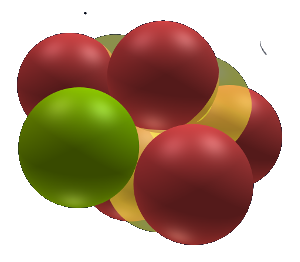Oxygen 18
Atom -
3 years 2 months ago
Oxygen 18 is the last stable isotope. it shows the 2 extra 'neutrons' one on the neutral ending and one on the active part of the Carbon nuclet on one side. More "neutrons' would result in a collision of the "neutrons" and create the next cap that would result in the creation of Fluorine 19.
This shows (in combination with Carbon 14) clearly that one side of the active Carbon nuclet can have one extra "neutron". More will result in Beta minus decay and the formation of the next element.
| Element | |
| Valence | 2, 1, 0, -1, *-2 |
| Stability |
|
| Isotope |
2
|
| Abundance |
0.21 %
|
| Half Life |
Stable
|
| Decay | |
| Protons |
18
|
| Inner Electrons |
10
|
| Outer Electrons |
8
|
| Nuclear Spin |
0
|
| Mass Actual |
17.9992 AMU
|
| Mass H Norm |
17.8594 AMU
|
| Mass Calc |
18.1409 AMU
|
| BE Nucleon |
7767.10 KeV
|
| BE Actual |
139.81 MeV
|
| SAM Lines |
64.00
|
| BE SAM Lines |
142.40 MeV
|
| BE Difference |
97.97%
|
| AN-ISOTOPE |
8: 18
|
| Nid | 401 |
Atomic structure
N0:
state: initial
protons:
P0:
P1:
P2:
P3:
P4:
P5:
P6:
P7:
P8:
P9:
P10:
P11:
P12:
P13:
P14:
P15:
P18: {color: neutron}
neutrons: [U00]
electrons:
E01: {protons: [P2, P8]}
E02: {protons: [P10, P5]}
E03: {protons: [P0, P4]}
E04: {protons: [P1, P11]}
E05: {protons: [P7, P9]}
E06: {protons: [P3, P6]}
E07: {protons: [P15, P14]}
E08: {protons: [P13, P12]}
state: initial
protons:
P0:
P1:
P2:
P3:
P4:
P5:
P6:
P7:
P8:
P9:
P10:
P11:
P12:
P13:
P14:
P15:
P18: {color: neutron}
neutrons: [U00]
electrons:
E01: {protons: [P2, P8]}
E02: {protons: [P10, P5]}
E03: {protons: [P0, P4]}
E04: {protons: [P1, P11]}
E05: {protons: [P7, P9]}
E06: {protons: [P3, P6]}
E07: {protons: [P15, P14]}
E08: {protons: [P13, P12]}
